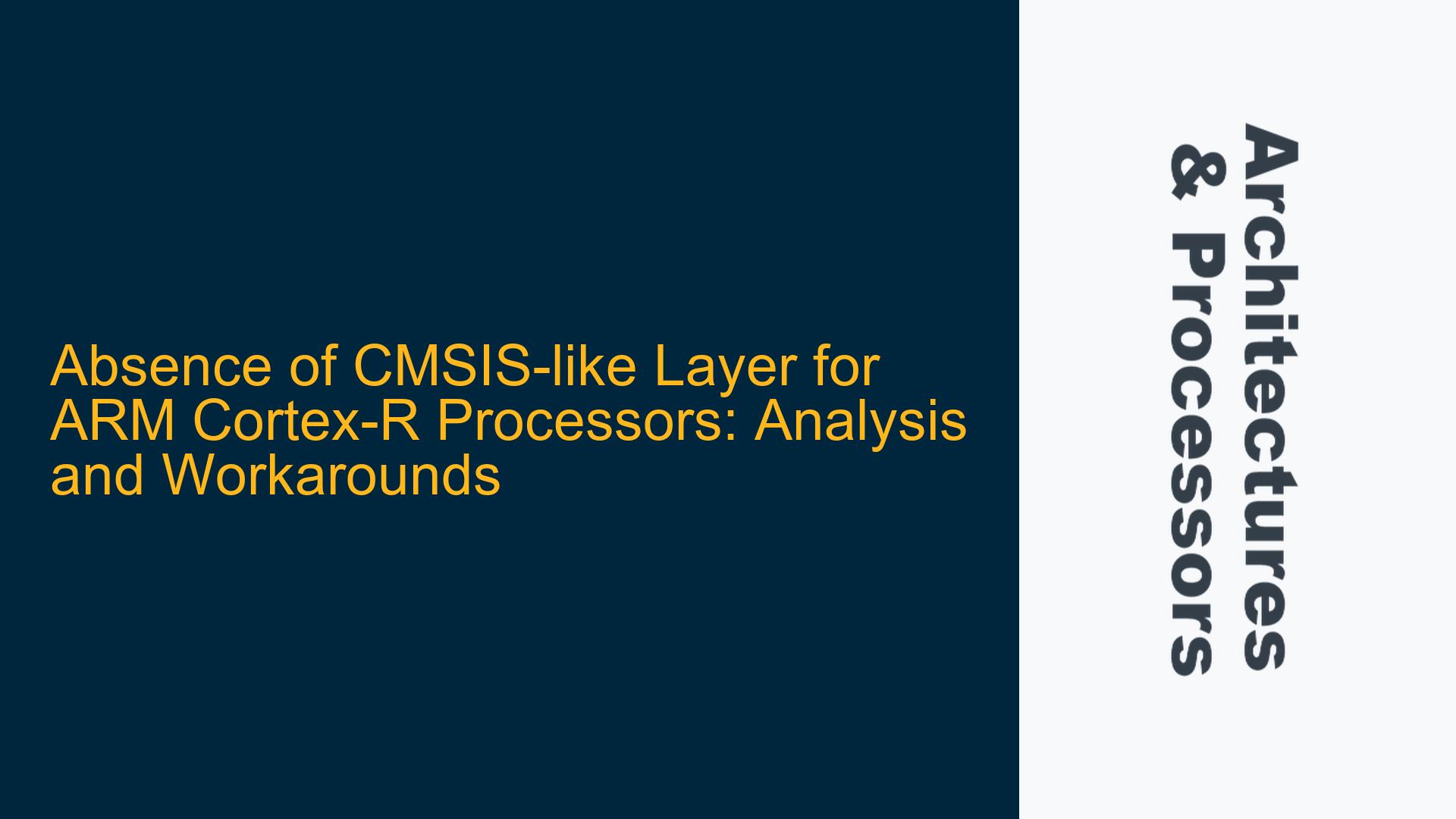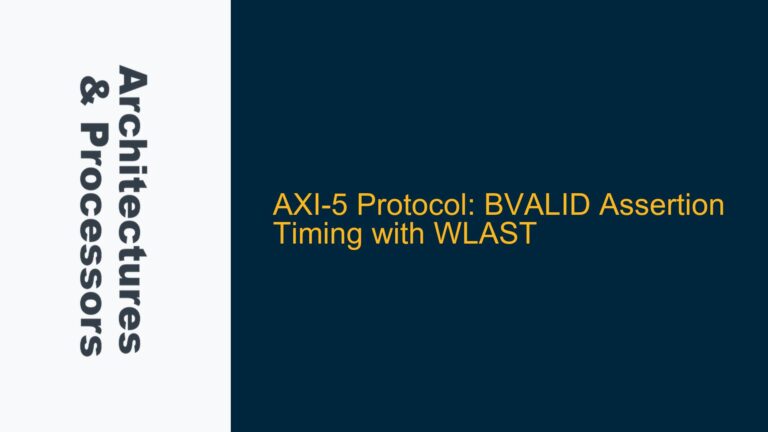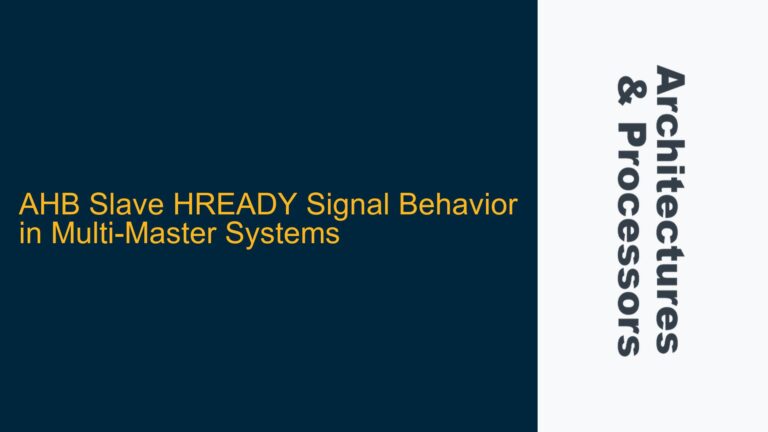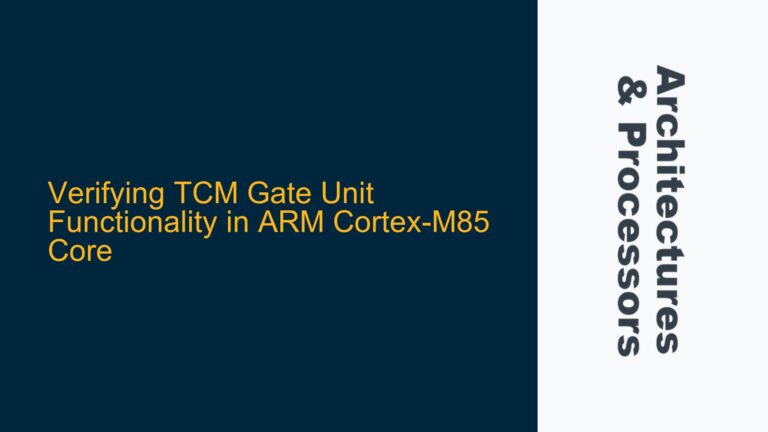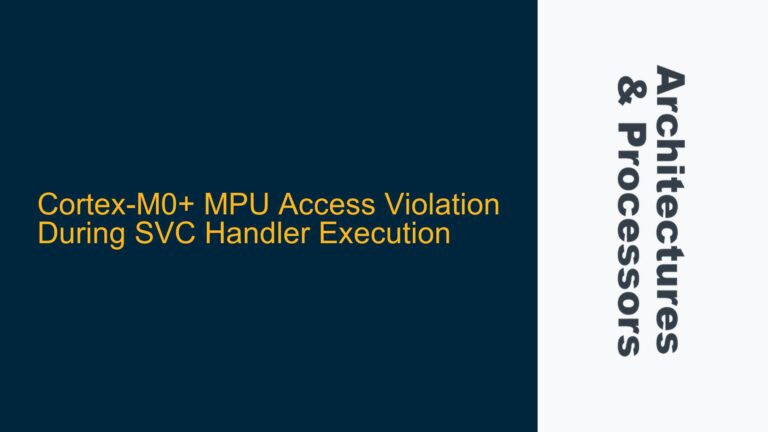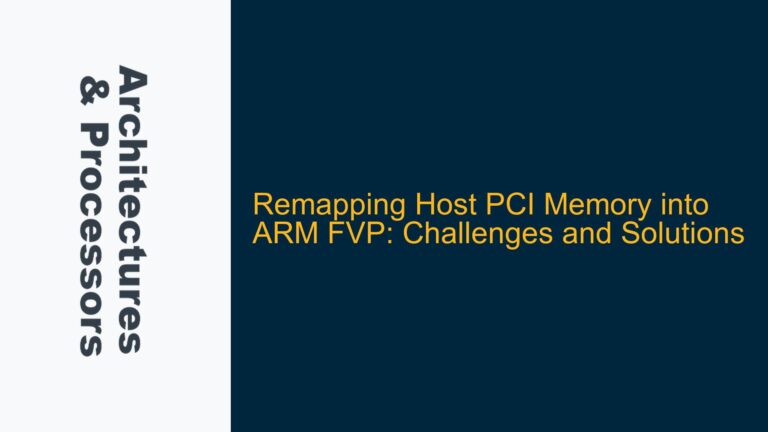ARM Cortex-R Processors and the Lack of a Standardized Software Abstraction Layer
The ARM Cortex-R series of processors is designed for real-time, high-performance applications, particularly in safety-critical industries such as automotive, industrial control, and storage systems. Unlike the Cortex-M series, which is widely used in microcontroller applications, the Cortex-R series is often integrated into custom ASICs or SoCs tailored for specific use cases. One notable gap in the Cortex-R ecosystem is the absence of a standardized software abstraction layer akin to the Cortex Microcontroller Software Interface Standard (CMSIS) available for Cortex-M processors. This absence raises questions about software portability, development efficiency, and ecosystem support for Cortex-R-based systems.
CMSIS provides a vendor-independent hardware abstraction layer for Cortex-M processors, simplifying software development by offering standardized APIs for core peripherals, DSP functions, and RTOS integration. For Cortex-R processors, however, no equivalent layer exists, leaving developers to rely on vendor-specific libraries or custom implementations. This discrepancy stems from the differing market dynamics and use cases of Cortex-R processors. While Cortex-M processors are ubiquitous in general-purpose microcontrollers, Cortex-R processors are often deployed in specialized applications where customization and performance are prioritized over standardization.
The lack of a CMSIS-like layer for Cortex-R processors can lead to challenges in software development, particularly when porting code between different Cortex-R-based platforms or integrating third-party libraries. Developers must often write low-level hardware-specific code, which increases development time and complexity. Additionally, the absence of a standardized abstraction layer can hinder the adoption of Cortex-R processors in new applications, as developers may perceive the ecosystem as less mature or less supported compared to Cortex-M.
Market Dynamics and Specialized Use Cases of Cortex-R Processors
The absence of a CMSIS-like layer for Cortex-R processors can be attributed to the unique market dynamics and specialized use cases of these processors. Cortex-R processors are primarily used in applications requiring high reliability, deterministic performance, and real-time responsiveness. These applications often involve custom ASICs or SoCs designed for specific industries, such as automotive braking systems, industrial automation, or storage controllers. In such contexts, the hardware and software are tightly coupled, and vendors often provide proprietary libraries and tools tailored to their specific implementations.
The automotive industry, for example, frequently uses Cortex-R processors in safety-critical systems like electronic stability control (ESC) and anti-lock braking systems (ABS). These systems demand rigorous certification processes, such as ISO 26262 for functional safety, which often necessitates custom software solutions. As a result, automotive manufacturers and suppliers may prefer to develop their own software stacks rather than relying on a generic abstraction layer like CMSIS. This preference for customization over standardization is a key factor in the lack of a CMSIS-like layer for Cortex-R processors.
Another factor is the relatively limited adoption of Cortex-R processors compared to Cortex-M processors. While Cortex-M processors are found in a wide range of consumer and industrial products, Cortex-R processors are typically used in niche applications with stringent performance and reliability requirements. This narrower market reduces the incentive for ARM or third-party vendors to invest in developing a standardized software abstraction layer for Cortex-R processors. Additionally, the diversity of Cortex-R implementations across different vendors and industries further complicates the creation of a unified abstraction layer.
Workarounds and Strategies for Cortex-R Software Development
Despite the absence of a CMSIS-like layer for Cortex-R processors, developers can adopt several strategies to mitigate the challenges of software development. One approach is to leverage existing CMSIS components that are compatible with Cortex-R processors, such as the CMSIS-DSP library. While CMSIS-DSP is primarily designed for Cortex-M processors, it can be adapted for use with Cortex-R processors, particularly for signal processing tasks. However, this approach requires careful consideration of differences in memory models, interrupt handling, and peripheral access between Cortex-M and Cortex-R architectures.
Another strategy is to rely on vendor-specific libraries and tools provided by SoC manufacturers. Many vendors offer comprehensive software development kits (SDKs) that include drivers, middleware, and example code tailored to their Cortex-R-based products. While these SDKs may lack the portability of a standardized abstraction layer, they can significantly reduce development time and effort for specific platforms. Developers should also consider collaborating with vendors to influence the development of future SDKs, potentially incorporating more standardized APIs and abstractions.
For projects requiring high portability or integration with third-party software, developers can create their own abstraction layers. This approach involves defining a set of hardware-independent APIs for core peripherals and system functions, which can then be implemented for different Cortex-R-based platforms. While this requires additional upfront effort, it can provide long-term benefits in terms of code reuse and maintainability. Additionally, developers can draw inspiration from CMSIS and other abstraction layers to design APIs that are consistent with industry standards.
In cases where real-time performance and determinism are critical, developers may need to write low-level assembly code or use hardware-specific features directly. This approach is often necessary for optimizing interrupt service routines (ISRs), memory access patterns, and other performance-sensitive tasks. However, it should be used judiciously, as it can reduce code portability and increase complexity. Developers should document such optimizations thoroughly and isolate them within modular components to facilitate future maintenance and porting.
Finally, the ARM ecosystem includes a range of development tools and resources that can assist Cortex-R developers, even in the absence of a CMSIS-like layer. The ARM Compiler, for example, provides advanced optimization features and support for Cortex-R processors. ARM also offers documentation, application notes, and training materials that can help developers understand the architecture and optimize their software. By leveraging these resources and adopting a combination of the strategies outlined above, developers can overcome the challenges posed by the lack of a standardized abstraction layer for Cortex-R processors.
In conclusion, the absence of a CMSIS-like layer for Cortex-R processors reflects the specialized nature of these processors and the market dynamics of their primary applications. While this presents challenges for software development, developers can adopt a range of strategies to mitigate these challenges, from leveraging existing CMSIS components to creating custom abstraction layers. By understanding the unique requirements of Cortex-R processors and utilizing the available tools and resources, developers can effectively harness the power of these processors for real-time, high-performance applications.
